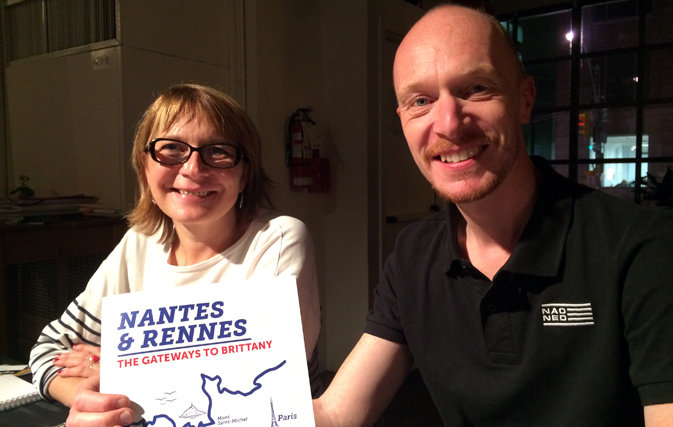TORONTO — When Canadians travel to France they usually want to see the Eiffel Tower in Paris or the lavender fields of Provence.
But there’s more to France than Paris and Provence, and reps from various tourist boards and operators in lesser-known regions of the country took part in a workshop to spread the word to Canada.
According to Atout France, France’s state tourism agency, tourists are looking for something different, something more experiential, when they travel.
So the government, through Minister of Foreign Affairs Laurent Fabius, has set a goal of reaching 100 million tourists over the next few years, investing $1 billion in everything from accommodations to infrastructure.
Brittany is one of those lesser-known regions. Just two hours from Paris by high-speed train, the city of Rennes – the capital of Brittany – offers 2,000 years of history, along with a lively cultural scene and year-round festivals. Rennes connects to Nantes by regional train, where tourists can visit the 15th century Ducs de Bretagne Castle.
“The two cities are very trendy cities in France,” said Xavier Theret, head of international promotion and relations with Le Voyage a Nantes. The cities have preserved their medieval heritage, but are also thriving centres of contemporary art and architecture. Gastronomy is an essential aspect of local life; the region is known for Muscadet, a local white wine.
They’re also jumping-off points for other famous sites in the region, such as Mont Saint-Michel and the Loire Valley.
Pays de la Loire is a route along the Loire River, which can be explored by bike (via an 800-kilometre trail), by water (aboard the CroisiEurope) or by regional train. “We have a network of accommodations that work with us very closely,” said Virginie Priou, media relations for Pays de la Loire. “We also have agencies that can help [agents] organize it.”
Highlights include Angers, the city of art and history, the Nantes vineyards, an open-air museum among 120 km of riverbanks featuring contemporary artists and a thalassotherapy spa in La Baule on the seaside.
The winter season shouldn’t be ignored, either. Club Med isn’t just about sun; it has several alpine ski resorts, including 15 in France (out of 22 worldwide). Unlike most alpine ski resorts, Club Med offers an all-inclusive experience with ski passes and lift tickets, ski instruction, childcare and gourmet dining, said Robert Ruttan, business development manager for Ontario and West Canada with Club Med.
But there’s also sun to be had on the French islands of Martinique (at The Buccaneer’s Creek) and Guadeloupe (at Caravelle). “They’re very French, but they’re now being taken over by the Miami office and being run out of North America rather than Paris,” said Ruttan. “The reason being is because we have a better synergy with the North American market, so we’re going to Anglicize both resorts a little bit.”
Martinique’s hospitality sector is getting a boost this season with new and enhanced beachfront hotels and the launch of a new villa booking service, called Villaveo. And the Martinique Convention Bureau has been created to promote the destination to businesses, with a dedicated team to support events and meetings.
Both Air Canada and Air Transat offer nonstop service to the island from Montreal (with several other options out of the U.S.). Air Canada has also expanded its global network with the announcement of two new nonstop services to Lyon, France, beginning in summer 2016.

